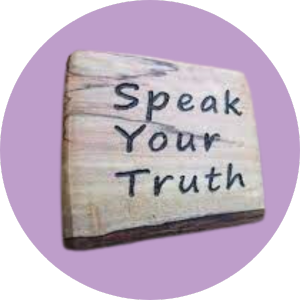By Jenn Rockefeller
The healing process for a survivor of narcissistic abuse is a lengthy and complicated one. It is fraught with anxiety, stress, doubt, depression and much more. Survivors are left feeling alone, scared, unsure and worthless. So how are survivors supposed to heal? How are they to even begin the healing process? And once they begin the process, what does that process even look like?
What is a narcissist?
Break the Silence Against Domestic Violence published an article in 2018 outlining the Truth on Narcissism. As a reminder, a narcissist is an individual who displays five or more of the diagnostic criteria for Narcissistic Personality Disorder (NPD), as outlined by the Diagnostic and Statistical Manual (DSM). The diagnostic criteria are outlined in the DSM-IV. Remember though, only a mental health professional can diagnose someone as an NPD individual.
What the healing process looks like
The healing from narcissistic abuse looks like a child who took a permanent marker and scribbled all over every single wall of the home. It would be filled with swirling scribbles, circles, and lines. Basically, it’s a huge mess. That’s what the healing process looks like – a huge mess.
Additionally, the healing process looks much different because narcissistic abuse centers on ultimately destroying the target from the inside. The NPD individual systematically tears the target down, which causes the target to lose themselves and therefore, the recovery involved is not just about healing from the trauma inflicted, but also about finding themselves again.
In a fog
When you are in the middle of the abusive situation, it’s like you are in a fog. You can’t see clearly. You are even unsure of what’s in front of you. This feeling makes you second guess the most basic of things like your intelligence and your decision making skills.
The lifting fog
When you are out of your situation, it’s natural that you begin to stumble towards the light. The fog begins to lift and you can begin to see a bit more clearly. You can see more than five feet in front of you and you begin to take your first tentative steps towards a new, free life.
A glimmer of hope
Just when you think you’ve gotten a hold on your healing journey, the narcissist shows you the side of them that made you fall for them in the first place. This throws you into a tizzy and you lose sight in your healing journey and want to return to the narcissist. You think maybe there’s good in them and you can get back the spark you once had. You think you can change them if only you love them more, or “change” and “get better” like they are suggesting you do.
Clarity begins
Maybe you begin searching online for feelings you’ve experienced. Maybe you come across terms like gaslighting, projection and blame shifting. You begin to see just how you were manipulated into believing you were the problem all along. You begin to realize the narcissist is just faking that glimmer of hope they have tossed your way.
Therapy
By this time, you may have begun to see a mental health professional to help you sort out your situation and help you move forward. It’s a good idea to research therapists in your area to uncover who is knowledgeable about narcissistic and/or emotional abuse, and how to help survivors heal.
Back and forth
At some point, you begin to learn that healing is a very messy journey. As a survivor you will have so many ups and downs, so many moments when you think the narcissist was right about you. You want to hide. You want to cry. But then, maybe you feel stronger the next day. The strength within you begins to build. But then maybe the narcissist tries to bring you down again, and you are once again filled with doubt and fear. It seems like a never ending rollercoaster ride of emotion. You begin to think, “Will this ever get better?”
Better days
As you move through your healing journey, you begin to realize that you are having more good days than bad. As the days turn into months, you begin to feel stronger and happier. You begin to find your voice again. You begin to speak out.
The above “steps” aren’t necessarily followed in order, either. It’s an all over the map kind of thing. You can move through these “steps” as seen, or you can jump back to an earlier step and move forward again. It’s like a nightmarish dance of one step forward, two steps back.
Ways you can heal
You might not think you will ever be able to heal from such an experience, but you absolutely can. Yes, it’s a long journey. Yes, you’ll have to put in hard work to get there. But you are strong and capable! You can do this! There are several ways that you can find a healing path that works for you. Just some of the ways that many survivors have found especially helpful include: therapy, journaling, exercise, and self=care activities like meditation and yoga.
Healing from narcissistic abuse is a lengthy process. It’s often a lifelong process for many survivors. But that doesn’t mean you won’t find a path to lead you to better days.
If you or someone you know is in an abusive relationship, there is help. You can visit the Break the Silence website at www.breakthesilencedv.org or chat with one of our helpline advocates at 855-287-1777.









